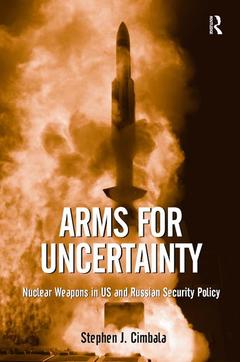Description
Arms for Uncertainty
Nuclear Weapons in US and Russian Security Policy
Author: Cimbala Stephen J.
Language: English
Subject for Arms for Uncertainty:
Keywords
johnson's; russia; list; missile; defense; nuclear; weapons; states; ballistic; missiles; NATO Nuclear Capability; Start Agreement; Start Treaty; NATO’s Intention; Missile Defenses; NATO Missile Defense; Nuclear Abolition; Start Level; NATO Russian Cooperation; NATO Enlargement; Russian Strategic Nuclear Forces; Vice Versa; Nuclear Weapons Spread; NATO Nuclear; Start Limit; Minimum Deterrence; Nonstrategic Nuclear Weapons; Nuclear Disarmament; NATO Europe; NATO Member State; NATO Decision; World War III; Nuclear Weapons States; Nuclear Arms Reductions; Conventional PGS System
Publication date: 10-2013
Support: Print on demand
Publication date: 11-2016
· 15.6x23.4 cm · Paperback
Description
/li>Contents
/li>Biography
/li>




